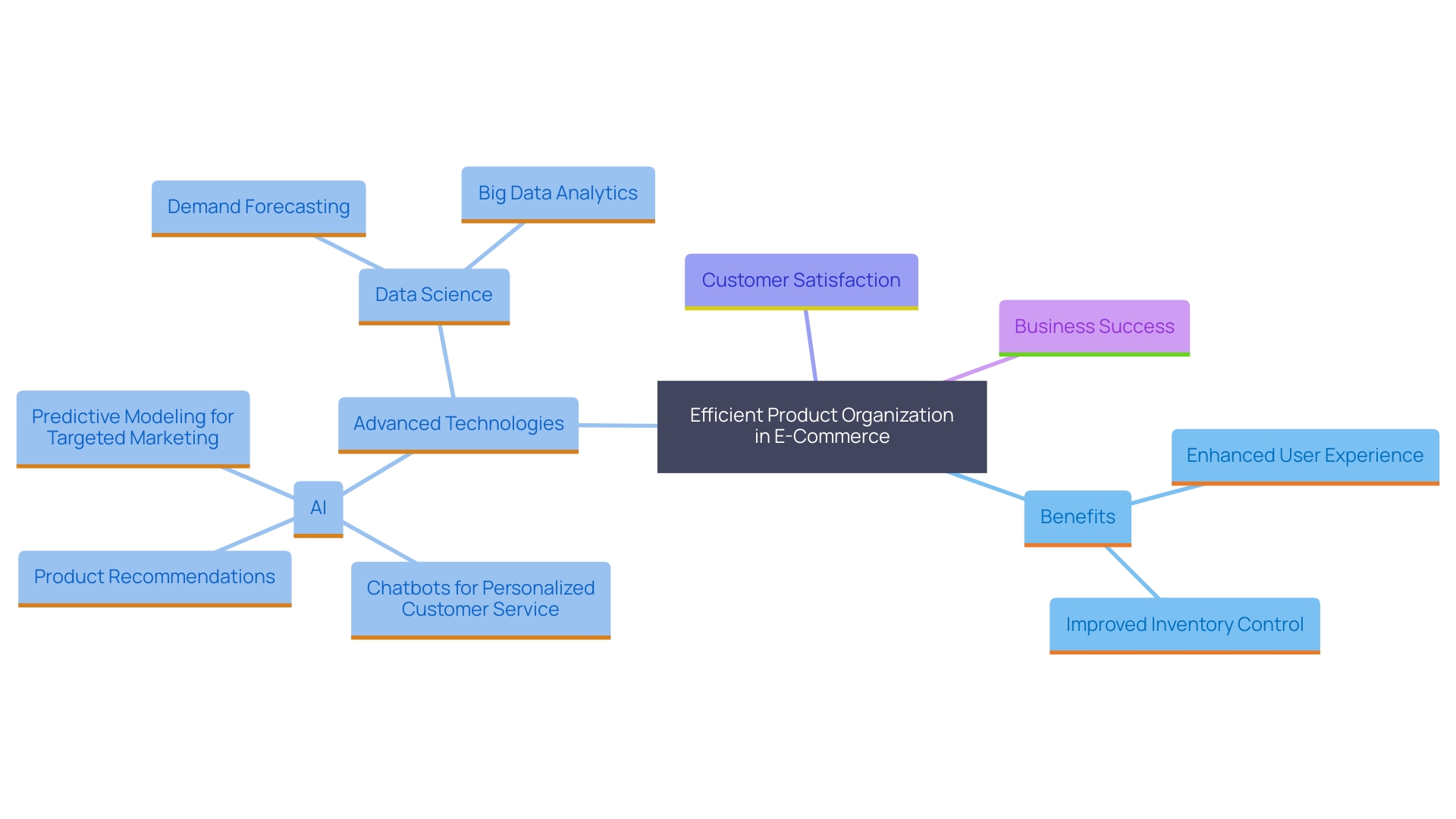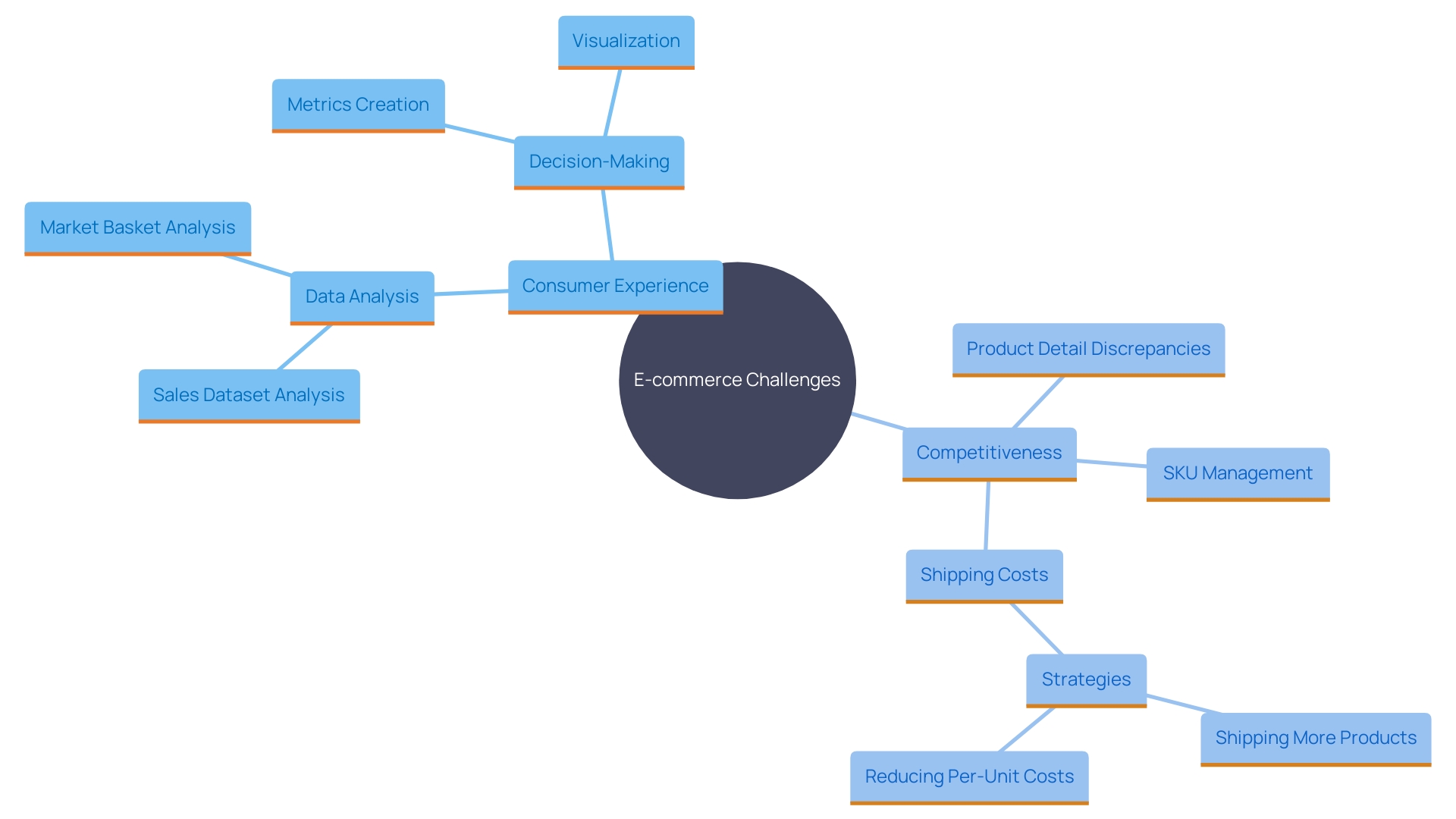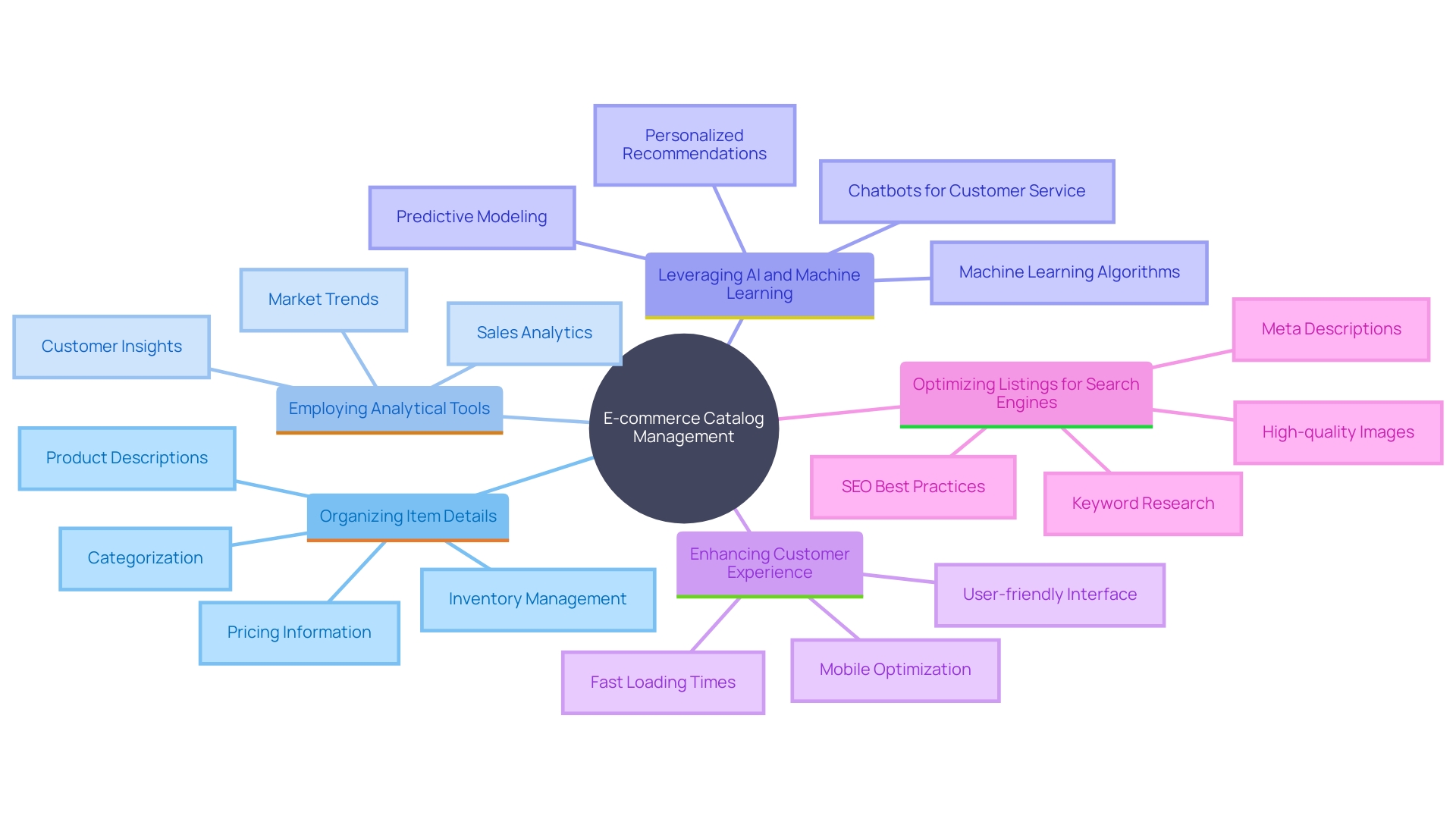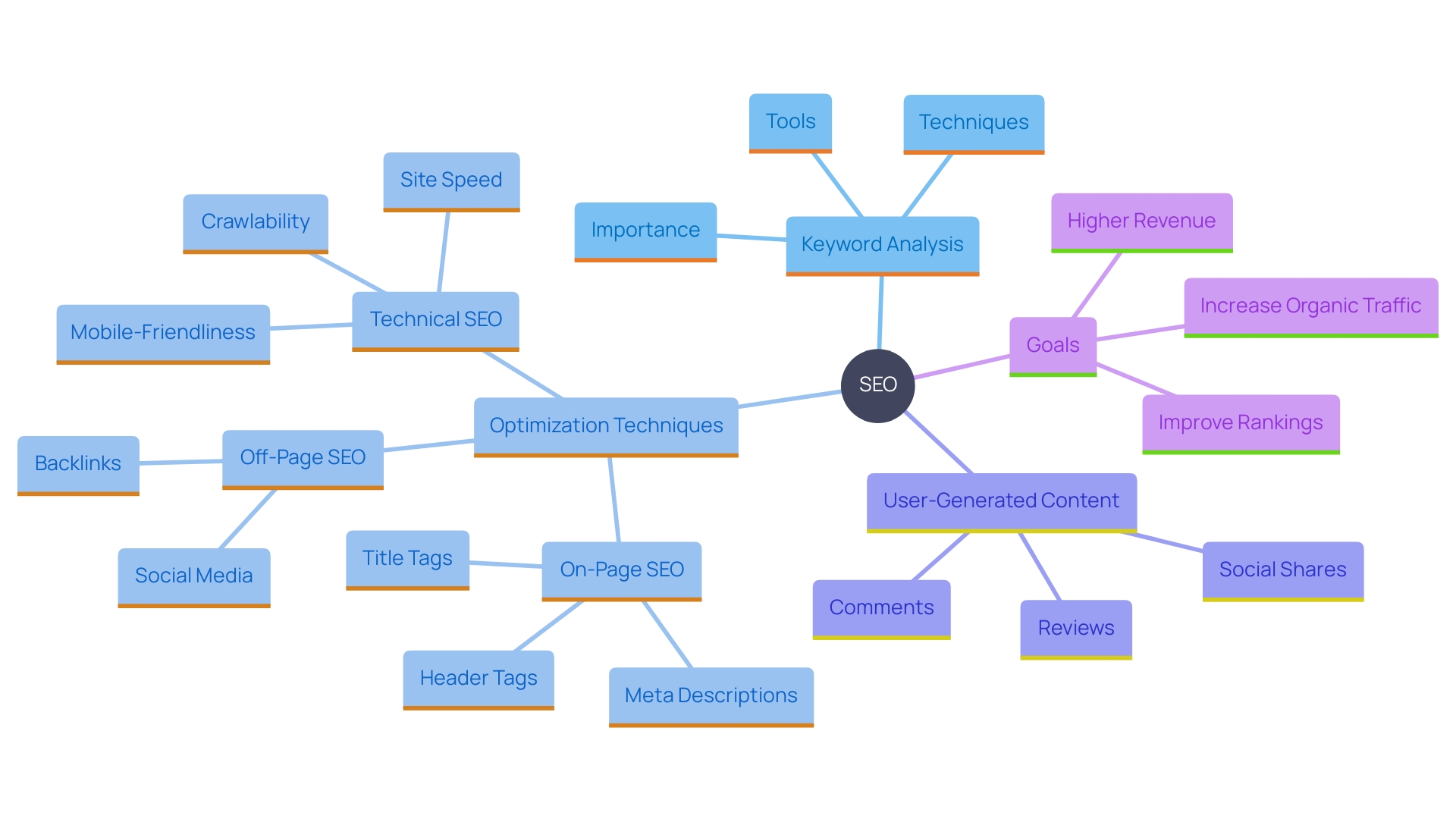Introduction
Efficient catalog management serves as the backbone of a thriving e-commerce operation, offering a streamlined method for businesses to present their products clearly and systematically. This meticulous organization not only elevates the user experience but also plays a pivotal role in boosting customer satisfaction and conversion rates. High-profile examples, such as Forever New, illustrate how effective catalog management can propel international expansion by providing a seamless and contemporary shopping experience that resonates with a global audience.
Precise inventory control, a byproduct of well-managed catalogs, mitigates the risks of stockouts and overstock situations, thereby safeguarding revenue streams. In an industry generating an estimated $5.7 trillion globally, the integration of advanced technologies like artificial intelligence and machine learning has become crucial for maintaining catalog accuracy and ensuring prompt customer service.
Companies like Western Union showcase the transformative power of data science in optimizing product listings to match consumer purchasing habits, thereby reducing basket abandonment rates and enhancing overall sales. In an ever-evolving e-commerce landscape, staying ahead with sophisticated catalog management practices is essential for businesses aiming to meet the dynamic demands of online shoppers.
Benefits of Effective Catalog Management
Efficient product organization is essential for simplifying the e-commerce process, enabling businesses to showcase items in a clear and structured way. This not only enhances the user experience but also significantly increases customer satisfaction and conversion rates. For example, Forever New, a worldwide fashion label, has utilized strong inventory organization to grow internationally, offering a stylish and modern shopping experience that appeals to clients around the world.
A well-organized collection aids in precise inventory control, reducing the risk of stockouts and overstock situations, which can significantly affect revenue. Based on recent information, the online retail sector produces an estimated $5.7 trillion worldwide, highlighting the significance of effective inventory organization. Additionally, the integration of advanced technologies like artificial intelligence and machine learning further refines accuracy, ensuring that customers find what they need promptly.
Western Union's application of data science in e-commerce illustrates how thorough inventory organization can improve user experience. By analyzing consumer data, Western Union has optimized its listings to align with purchasing habits, reducing basket abandonment and improving overall sales. This approach not only boosts customer retention but also fosters a more engaging shopping journey.
As the online retail environment changes, remaining proactive with efficient inventory handling techniques becomes essential. Utilizing technology to improve listings can offer actionable insights, assisting businesses in remaining competitive and addressing the constantly evolving needs of online shoppers.

Key Challenges in E-commerce Catalog Management
E-commerce enterprises face many obstacles in organizing their inventory, such as discrepancies in product details, difficulties in classification, and the necessity to handle large quantities of SKUs. The rapid evolution of market trends and consumer preferences necessitates constant updates and adaptations. Efficient processes are crucial, especially when leveraging data science to refine user experience (UX). By analyzing data from various touchpoints—from clicking an ad to leaving a review—retailers can gain actionable insights about consumer behavior and preferences. This data-driven approach not only enhances decision-making but also helps prevent customer churn and basket abandonment. With the U.S. e-commerce sales expected to hit $1.26 trillion by the conclusion of 2024, keeping an advantage in product organization is essential for sustaining competitiveness in this rapidly evolving sector.

Best Practices for Successful E-commerce Catalog Management
Achieving success in e-commerce catalog management involves a strategic approach that includes organizing and standardizing information, consistent categorization, and leveraging catalog management software tools. The initial action is to effectively arrange item details to ensure smooth navigation for individuals. Effective categorization and implementing relevant tags and attributes not only enhance internal search capabilities but also optimize SEO. Creating comprehensive item files with excellent descriptions, visuals, and clips greatly enhances customer experience and increases sales conversion.
Employing analytical tools offers greater understanding of behavior patterns, facilitating more precise and data-informed organization of resources. By aligning strategies proactively, businesses can ensure their listings remain clear, accessible, and optimized for both users and search engines. The integration of AI and machine learning algorithms offers personalized shopping experiences, making e-commerce platforms more relevant to each customer. With these best practices, businesses can create a robust and efficient e-commerce catalog management system that drives growth and customer satisfaction.

Optimize for Search Engines
Search engine optimization (SEO) is essential for enhancing the visibility of listings on e-commerce platforms. Given that 93% of online experiences start with a search engine, optimizing your site according to search engine guidelines, especially Google's, is critical. This entails utilizing pertinent keywords in item titles and descriptions, optimizing image alt text, and ensuring quick page load times.
Carrying out extensive keyword analysis is crucial, concentrating on search volume, ranking difficulty, and the purpose behind queries. Utilizing free or premium keyword planner tools can assist in identifying keywords that promise high search volume, low ranking difficulty, and high purchase intent.
Furthermore, incorporating user reviews and user-generated content (UGC) on product and category pages can significantly enhance trust and authority. Actively collecting and leveraging this information can work harder for your business, creating a better experience for your target audience and helping them make informed buying decisions.
Employing these SEO strategies will not only boost your search engine rankings but also drive more organic traffic to your website, ultimately leading to increased revenue.

Conclusion
Effective catalog management stands as a cornerstone for successful e-commerce operations, significantly enhancing user experience and customer satisfaction. By organizing product information clearly and systematically, businesses can improve conversion rates and create a seamless shopping journey. The examples of industry leaders, such as Forever New and Western Union, demonstrate how strategic catalog management can not only optimize inventory but also align product offerings with consumer preferences, thereby minimizing basket abandonment and driving sales.
However, challenges persist in maintaining an efficient catalog, including inconsistencies in product information and the need for constant updates to keep pace with evolving consumer trends. The integration of data analytics and advanced technologies is essential in overcoming these hurdles. By leveraging insights from consumer behavior, businesses can make informed decisions that enhance their catalog management processes and maintain competitiveness in the rapidly growing e-commerce sector.
Implementing best practices, such as organizing product information, optimizing for search engines, and utilizing analytical tools, can significantly bolster catalog management efforts. A proactive approach to categorization and the use of high-quality content not only improves visibility but also enriches the overall user experience. As e-commerce continues to expand, businesses that prioritize effective catalog management will position themselves for sustained growth and increased customer loyalty.





